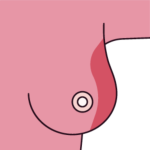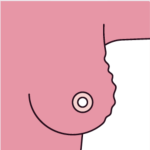01/10/2024
Breast cancer and ovarian cancer are among the most common cancers affecting women in the UK. An understanding of its prevalence, breast cancer symptoms, and early detection methods is essential for effective treatment.
According to Cancer Research, breast cancer is the most diagnosed cancer among women in the UK, with approximately 55,000 new cases each year. Ovarian cancer, while less common, is equally critical, with around 7,400 new cases annually.
Recognising the symptoms of breast cancer and ovarian cancer is key to early diagnosis.
Understanding Breast and Ovarian Cancer: What You Need to Know
Breast Cancer:
Prevalence: Breast cancer is the most common cancer among women globally, affecting 1 in 8 women over their lifetime. While the incidence is higher in women, men can also develop this illness.
Risk Factors: Age, family history, certain genetic mutations (like BRCA1 and BRCA2), hormonal factors, and lifestyle choices all contribute to risk of development.
Breast Cancer Symptoms: Common breast cancer symptoms include lumps in the breast or underarm, changes in breast shape or size, nipple discharge, or skin changes like dimpling or redness.
Ovarian Cancer:
Prevalence: Ovarian cancer is less common but is the 5th leading cause of cancer-related deaths among women due to its often late-stage diagnosis.
Risk Factors: Factors include age, family history of breast and ovarian cancer, inherited genetic mutations (e.g., BRCA1, BRCA2 and Lynch syndrome), and reproductive history.
Ovarian Cancer Symptoms: Ovarian cancer symptoms can be vague and include bloating, pelvic pain, difficulty eating, and frequent urination. These symptoms are often mistaken for less severe conditions, leading to delays in diagnosis.
Genetic Factors and Inherited Risks
Genetic factors significantly influence the development of breast and ovarian cancer. The BRCA1 and BRCA2 genes are particularly crucial in this context, as mutations in these cancer genes can greatly increase cancer risk.
Beyond BRCA1 and BRCA2, other genetic mutations also contribute to the risk of breast and ovarian cancer by affecting genes involved in cell growth, DNA repair, or hormone regulation. A strong family history of these cancers may suggest an inherited genetic mutation.
Understanding genetic factors and inherited risks is crucial for early detection and prevention.
Check for changes
The NHS provides a useful guide outlining essential steps for self-examination and key changes to monitor, including:
APPEARANCE – a change in size or outline, puckering, dimpling or redness
LUMPS – Any lumps or thickening that feels different, any swelling around your armpit or collarbone
FEELINGS – Pain or discomfort on part of your breast or armpit, especially if new and persistent
NIPPLE CHANGE – If one has become pulled in, changes shape, has discharge, bleeding, rash or crusted, flaky skin





Risk Management and Preventative Measures
Reducing the risk of breast and ovarian cancer involves a combination of lifestyle changes, preventive surgery options, and medical interventions. By adopting these measures, individuals can take proactive steps towards safeguarding their health.
Lifestyle Changes to Reduce Risk: Maintaining a healthy weight through regular exercise and a balanced diet is crucial. Limiting alcohol consumption and avoiding smoking can also lower the risk.
Preventive Surgery Options: For those at high risk due to genetic factors or a previous cancer diagnosis, preventive surgery may be considered.
At Randox Health, we offer a comprehensive range of health check packages that include tests to assess your risk and provide valuable insights into your overall health. Contact us today to learn more about how we can support you in your journey towards better health.
How we can help
Randox Health offers comprehensive genetic testing for breast and ovarian cancer to assess your risk and provide personalised recommendations. Our Genetic Breast & Ovarian Cancer Risk Test covers 8 different genes including BRCA1 and BRCA2 associated with both hereditary breast and ovarian cancer.



